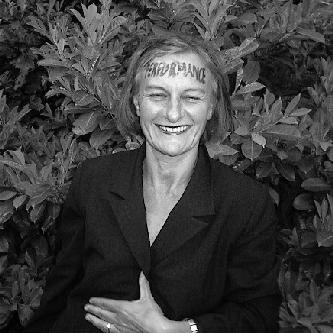Else Jespersen
Odense, Denmark
curator
e-mail
Else Jespersen
Odense, Denmark
curator
e-mail

What is performance art? I have been thinking a lot of that - and being writing a little - and perhaps it is the "essence" of performance art not to be defined? Like life itself. And then, performance art is fluid, chaotic, anarchistic, changing, developing etc. like life itself.
Performance art is found nearly everywhere - like life itself. It is in your mind, and it is physically presented - in indoor spaces (in public art institutions mostly, private galleries, apartments, - and lately (May 2001 in a kibbutz) and in outdoor, public spaces (in the streets, parks, squares of the cities and in the countryside too) - and in the cyberspace not forgetting.
Performance art has a very wide spectrum - like life itself, but the central idea is the presence of a human being - often the artist. So it is a social art form operating with the risk of the life itself - with the unforeseen, the unexpected and the unknown dimension.
Is the living aspect of performance art a contradiction to the process of "organising" the performances in performance festivals, where a program, a financial budget, perhaps a "concept", a theme for the festival is claimed by the organizer? Are these conditions allowing the anarchistic and 'border-crossing' philosophy of performance art? Most performance artists love to participate in a festival - widening the network among performance artists, being inspired and getting response to their performance from colleagues.
But with this social aspect in mind, everybody working with performance art, the artist, the curator/organizer and the audience have a responsibility in relation to performance art and its development. The responsibility is in the choices you take.
It is the choice and responsibility of the curator(s) to invite a number of artists and finally decide the program perhaps with a chosen a priory 'idea'. This process has some dependency of the financial situation of the festival furthermore depending on the choices of others. Principles and conditions for festivals are different decided by the curator, who very often is a performance artists him/herself, but might as well be a person inside or outside the art institution with a special devotion to performance art.
Fundamentally, it is the choice of the performance artist to accept or not accept the conditions proposed him /her in the process from idea to realization of a performance. The performance artist is also choosing the fundamental context of his/her performance - indoor or outdoor. (In indoor performances you even meet another choice concerning the mobility of the audience: the open floor allowing the audience to walk around the performer, and the theatre where the audience are seated).
In an (art) institution with many restrictions and rules (with its character of a holy place, a modern church, where the audience often are whispering) much authenticity and "substance" of the performance idea may disappear. But on the other hand, much new inspiration may come to the artist too, because of the meeting with this special context and the possibilities it gives - concerning the architecture, the (often) functioning technology - and not to forget the people working in the institutions. And finally: the performance art may challenge these institutional restrictions, giving life and a little chaos to order - practising the "essence" of performance art?
Especially the younger performance artists today want to challenge and involve in their performances the newest technology and the new images/pictures and sounds it may create. Logically it increases the tendency of performance art to 'place' itself indoors with the "security" for the technique.
Concerning the responsibility of the audience to performance art it depends largely on the choices of the curator and the artists. The reactions of the audience to a performance may depend on the place - and of course the performance: In- and outdoor performances may have a different audience, the art-knowing, critical (?) audience and the woman and the man in the "street" occasionally meeting the performance - as an interruption of daily life. Especially in the interactive performances where the audience are invited to act together with the performer the character and responsibility of the audience is visible.
It is very important still to find performance art everywhere, in different contexts with different audience perhaps, and basically because of the controversial questions posed by performance art: what is art - and what is life?